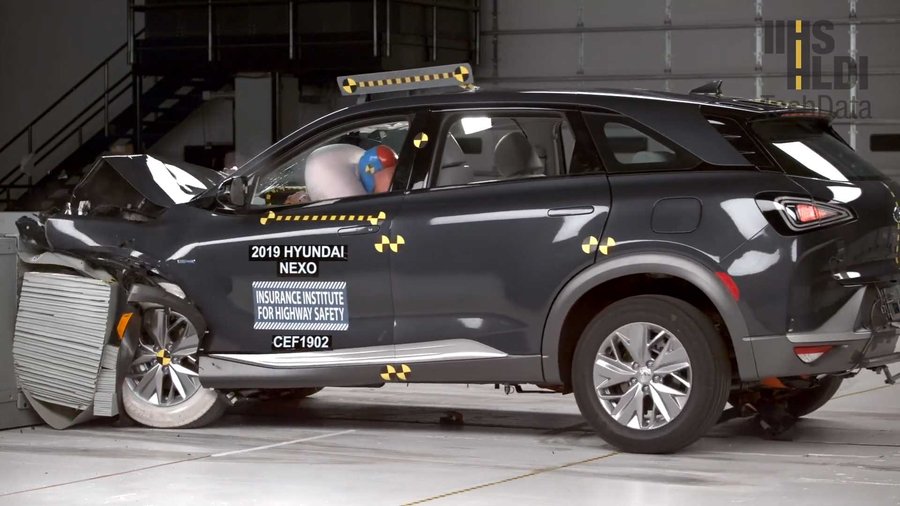See Hydrogen-Powered Hyundai Nexo Survive Its First Crash Test

Electric cars continue to march forward, but hydrogen fuel cell designs are still holding on. The Hyundai Nexo is only available in California, but the SUV recently backed up its safety cred with a Top Safety Pick + award from the Insurance Institute for Highway Safety (IIHS). According to Hyundai, it's the first production fuel-cell vehicle to even be tested by IIHS, never mind receive an award.
Garnering the award requires a slathering of good ratings for everything from side impacts to headlight effectiveness, with an advanced or superior rating for crash prevention – otherwise known as active safety systems like automatic emergency braking. As such, the Nexo scored good in all crash categories and was issued a good rating for its slim auto-dimming LED headlights. It achieved the required superior rating for its crash prevention systems, having dodged collisions in 12-mph and 25-mph tests.
Crashing a vehicle filled with hydrogen tends to evoke images of the infamous Hindenberg disaster, but it's not like gasoline-powered vehicles aren't filled with extremely flammable fluids and vapors. To Hyundai's credit, the video details the Nexo's body structure and fuel tanks, and showcases the various steps taken to make sure a catastrophic hydrogen-fueled fireball doesn't occur.
That's good, because we drove a Nexo back in 2018 and enjoyed our time behind the wheel. With a range of 370 miles and a five-minute refuel time for the hydrogen tanks, it offers a motoring experience familiar to pretty much anyone. And with the only by-product of the electric conversion process being water, it's certainly an environmentally friendly form of transportation.
The question now is whether hydrogen fuel cells have a future in mainstream motoring. If this technology had been pushed 10 years ago when electric cars still struggled with 100-mile ranges and hours of recharge time, it might be a different story. As battery development advances and fast-charging electric infrastructure expands, the window for electric vehicles utilizing high-pressure hydrogen fuel cells is rapidly closing.
Related News
